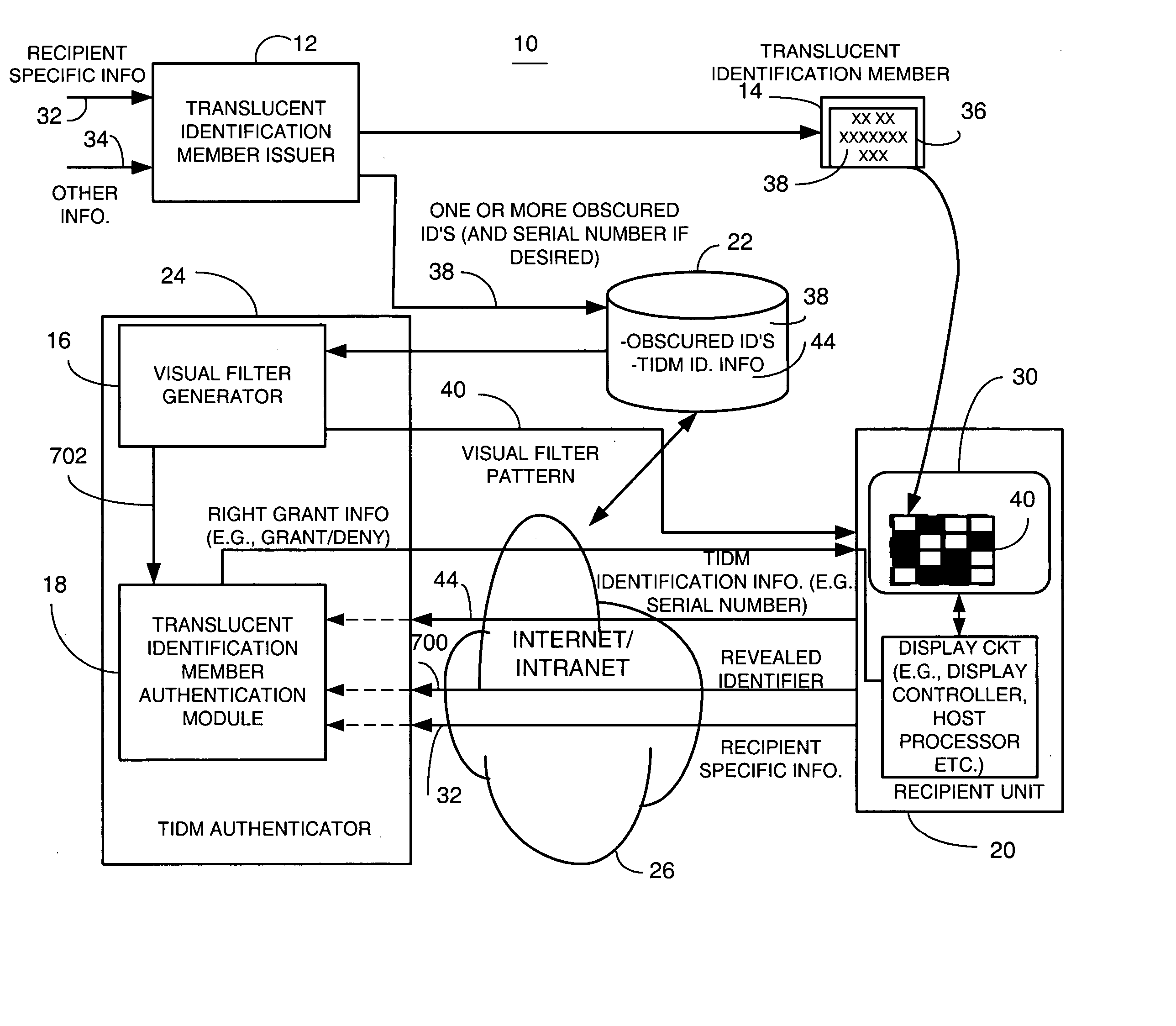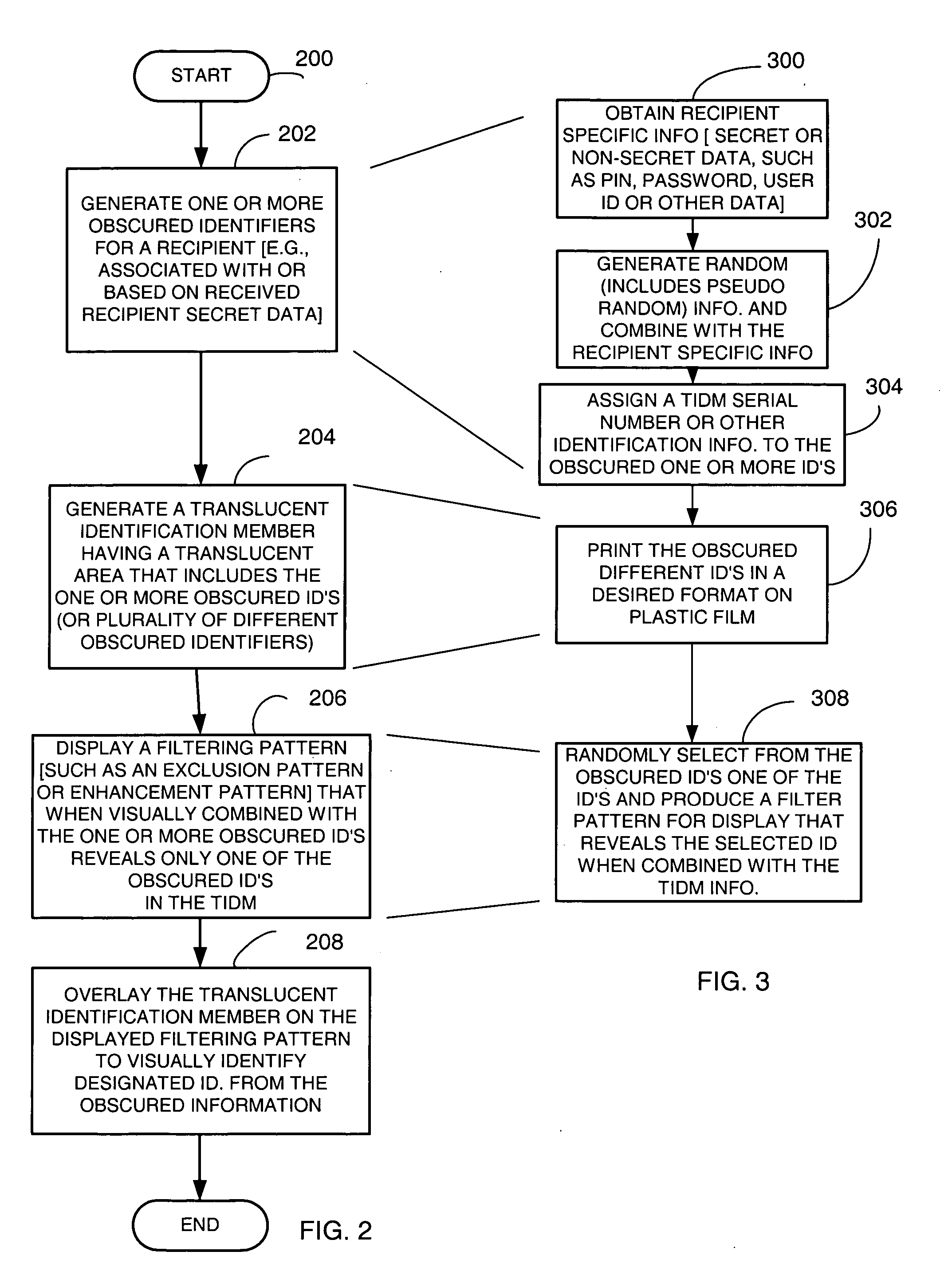Method and apparatus for providing authentication using policy-controlled authentication articles and techniques
a technology of policy-controlled authentication and authentication articles, applied in the field of methods and apparatus for providing authentication using policy-controlled authentication articles and techniques, can solve the problems of affecting the effectiveness of the method, and affecting the practicability of mutual authentication techniques
- Summary
- Abstract
- Description
- Claims
- Application Information
AI Technical Summary
Benefits of technology
Problems solved by technology
Method used
Image
Examples
Embodiment Construction
[0075] Briefly, a method and apparatus provides first or second factor authentication (or other factor of authentication) by providing selectability of a plurality of authentication policies associated with an authentication article or technique. In one example, a second factor authentication article includes authentication information, such as a plurality of data elements in different cells or locations on the authentication article, which can be located by using corresponding location information. The method and apparatus provides second factor authentication based on the second factor authentication article by enforcing at least one of the plurality of selected second factor authentication policies. In one embodiment, individual or group policies for second factor authentication processes are provided wherein the second factor authentication policies are associated with a second factor authentication article that includes authentication information located thereon that can be loc...
PUM
 Login to View More
Login to View More Abstract
Description
Claims
Application Information
 Login to View More
Login to View More - R&D
- Intellectual Property
- Life Sciences
- Materials
- Tech Scout
- Unparalleled Data Quality
- Higher Quality Content
- 60% Fewer Hallucinations
Browse by: Latest US Patents, China's latest patents, Technical Efficacy Thesaurus, Application Domain, Technology Topic, Popular Technical Reports.
© 2025 PatSnap. All rights reserved.Legal|Privacy policy|Modern Slavery Act Transparency Statement|Sitemap|About US| Contact US: help@patsnap.com



